

The Elk & Bison Prairie offers a native grassland habitat that was once common in Kentucky more than a century ago. Elk and bison roam free within this 700-acre enclosure.
Visitors explore the wonders of the tallgrass prairie habitat through traveling in their enclosed vehicle via a 3.5-mile paved loop road. Numerous other wildlife species and a stunning array of native plants also thrive in the prairie.
Wild turkeys, a variety of birds, small game, butterflies, and prairie mammals find sanctuary in the Elk & Bison Prairie. What will you discover?
Due to safety concerns for both our visitors and our large animals in the Elk & Bison Prairie, vehicles must be enclosed; pedestrians, motorcycles, bicycles, etc. are not allowed for safety reasons.
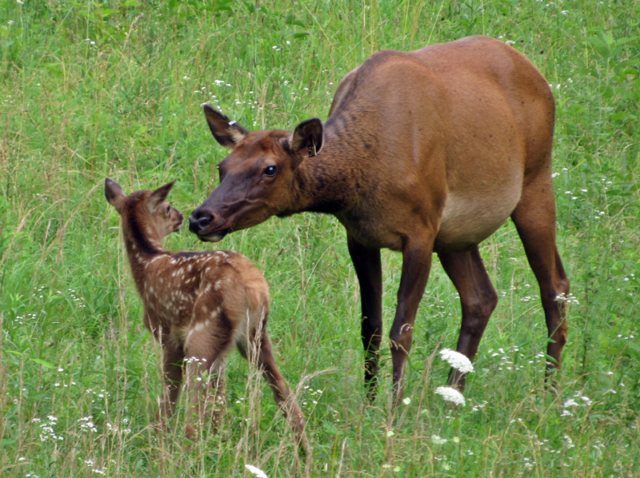
Spring is a time for new life! During March and April, we begin the process of controlled burns to protect the prairie by removing dead grasses and deterring tree growth. Elk and bison shed their winter coats. Many animals seek out rubs — trees, stumps, or rocks — to help the shedding process along.
During May, the first bison calves appear. Bison calves stay close to their mothers. Elk calves are born in late May or June. Elk keep their newborn calves hidden in vegetation until the young are strong enough to keep up with the herd.
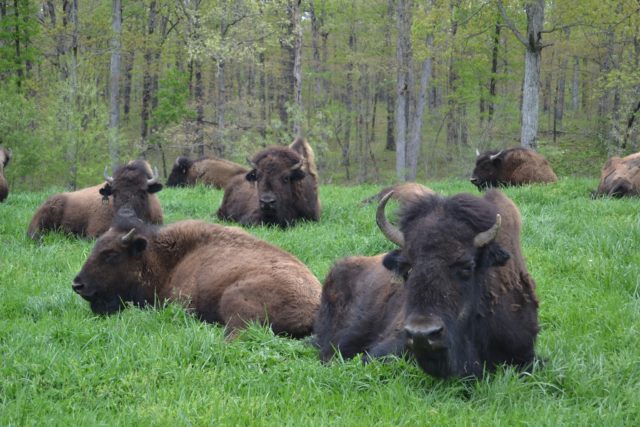
It’s prime growing season for grasses, flowers, and babies in the prairie. During the hottest days, both elk and bison seek relief by finding shade trees or taking a dip in a pond. You’ll find these large animals to be most active between sunrise and sunset. If you are visiting during summer, you might want to visit the prairie just after sunrise and right before sunset. Take caution when in the presence of bison during breeding season from July to September. Bulls can be especially aggressive at this time.
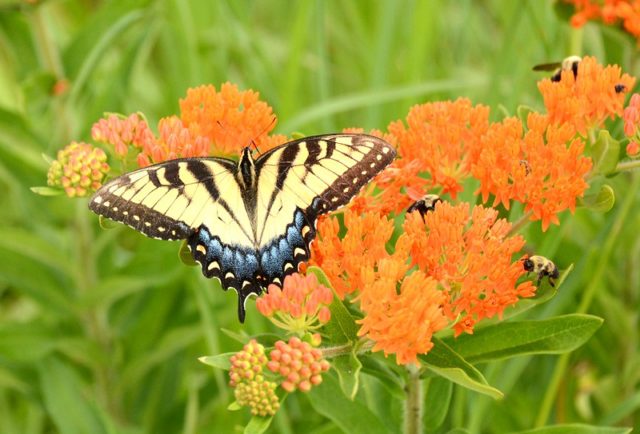
In early autumn you may see prairie wildflowers in bloom—purple blazing stars, partridge peas, and butterfly milkweeds. Autumn is also a busy time for prairie wildlife. In September and October elk begin “bugling”—their mating call. Elk also rub the velvet from their antlers to prepare for mating season. Watch for trees that have been rubbed bare of bark; a sign that an animal polished its antlers. In cool weather, snakes seek out the warmth of our blacktop road. Please do not run over or harass the snakes! Reptiles are very important to the prairie ecosystem.
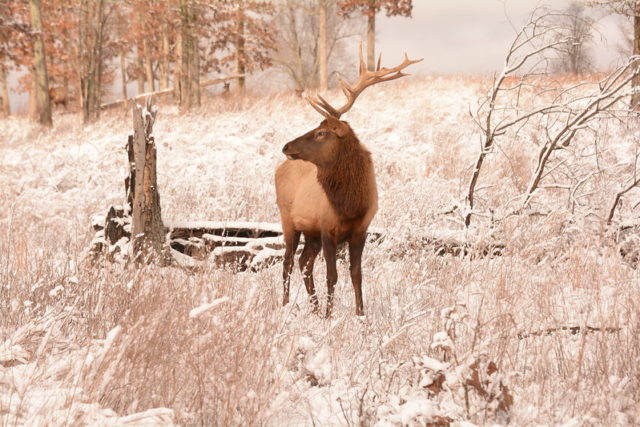
The bare landscape of winter heightens wildlife viewing opportunities. Elk and bison will have their full winter coats by December. Elk will browse on dried grasses, twigs, bark, and mast (acorns). Bison will eat grass through the winter months and throughout the day when it’s cold.
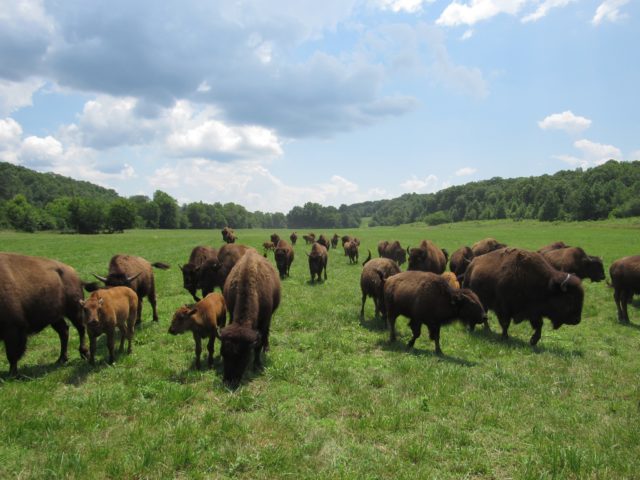
The South Bison Range is situated alongside the Woodlands Trace National Scenic Byway, across from the Homeplace 1850s Working Farm and south of the Tennessee state line. From the road, visitors can view our second bison herd roaming in two adjacent 100-acre pastures. Bison are very dangerous. Stay back from the fence if bison are near; bulls have been known to charge the fence and escape.
